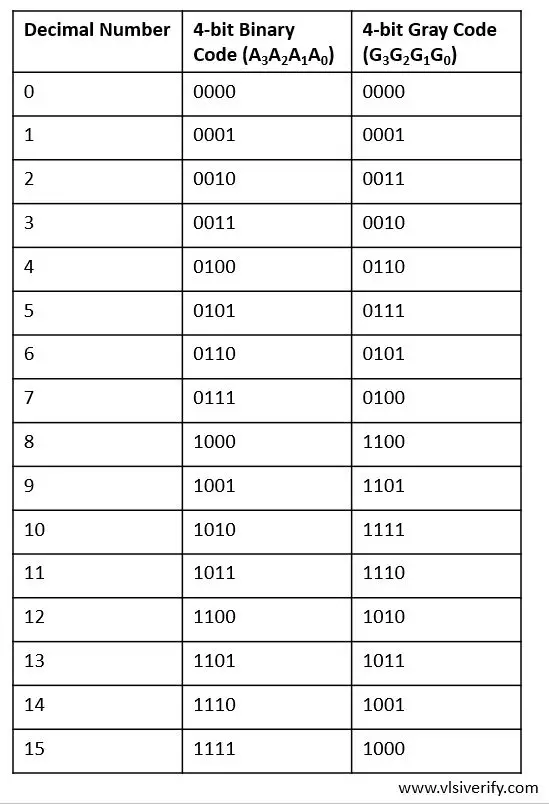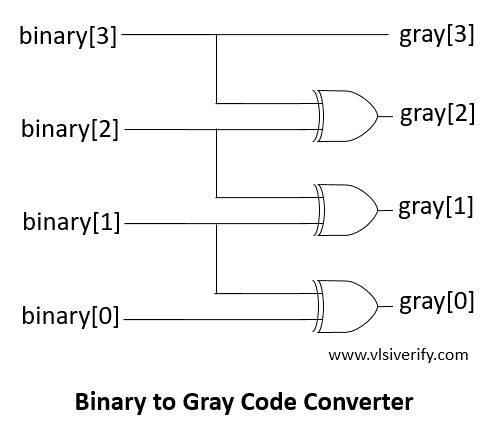Binary to Gray Code Converter
Gray Code is similar to binary code except its successive number differs by only a single bit. Hence, it has importance in communication systems as it minimizes error occurrence. They are also useful in rotary, optical encoders, data acquisition systems, etc.
Let’s see binary numbers and their equivalent gray code in the below table.
Truth Table

By solving using K-map technique, a simple combinational circuit turned out as

Binary to Gray Code Converter Verilog Code
module b2g_converter #(parameter WIDTH=4) (input [WIDTH-1:0] binary, output [WIDTH-1:0] gray);
genvar i;
generate
for(i=0;i<WIDTH-1;i++) begin
assign gray[i] = binary[i] ^ binary[i+1];
end
endgenerate
assign gray[WIDTH-1] = binary[WIDTH-1];
endmoduleTestbench Code
module TB;
reg [3:0] binary, gray;
b2g_converter b2g(binary, gray);
initial begin
$monitor("Binary = %b --> Gray = %b", binary, gray);
binary = 4'b1011; #1;
binary = 4'b0111; #1;
binary = 4'b0101; #1;
binary = 4'b1100; #1;
binary = 4'b1111;
end
endmoduleOutput:
Binary = 1011 --> Gray = 1110
Binary = 0111 --> Gray = 0100
Binary = 0101 --> Gray = 0111
Binary = 1100 --> Gray = 1010
Binary = 1111 --> Gray = 1000Compact implementation is mentioned below:
Alternative Verilog implementation
module b2g_converter #(parameter WIDTH=4) (input [WIDTH-1:0] binary, output [WIDTH-1:0] gray);
assign gray = binary ^ (binary >> 1);
endmoduleVerilog Codes